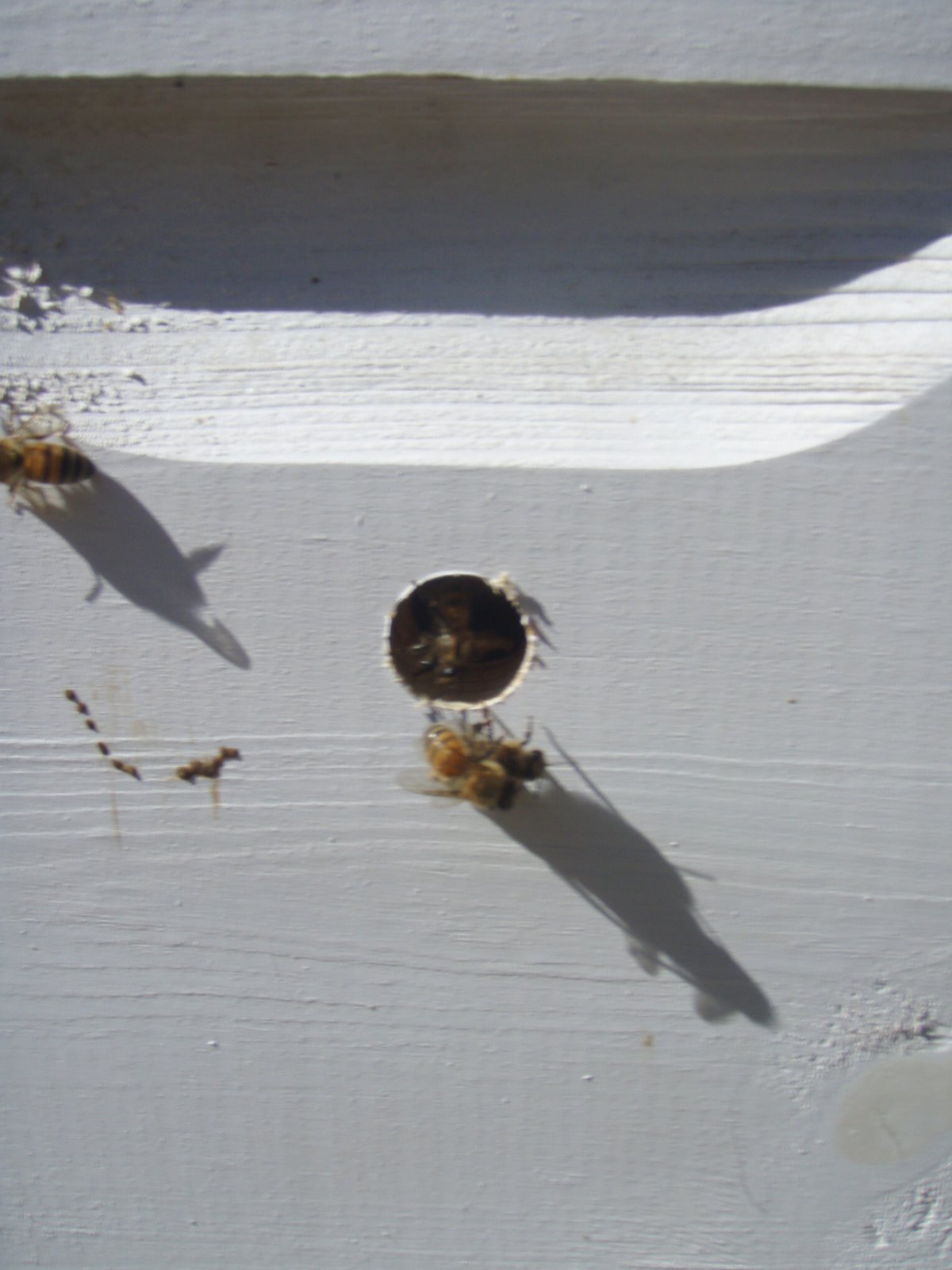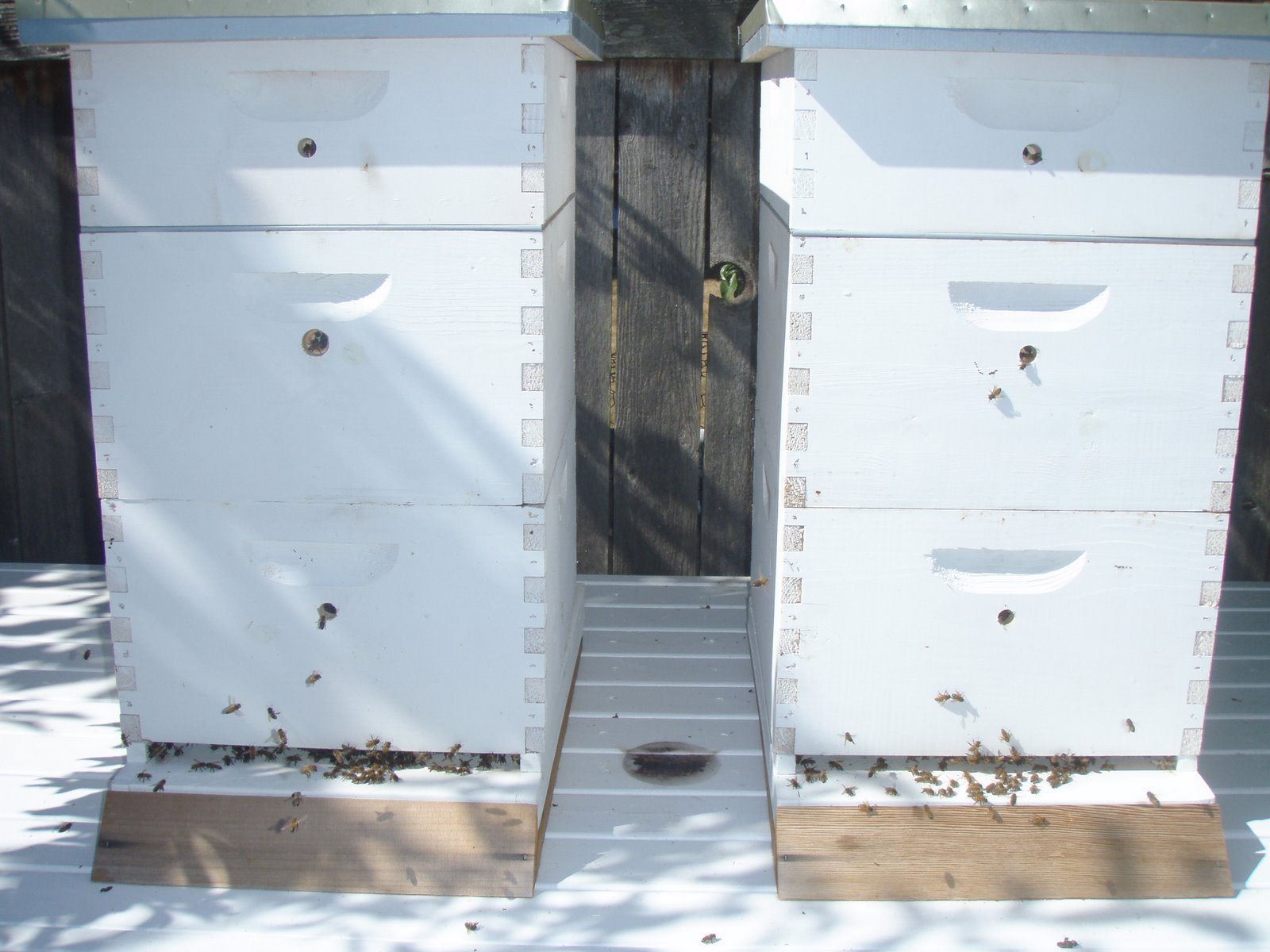The Hot Days of Summer
It’s been another very hot week (for us in the Pacific Northwest anyway, we’re not used to prolonged periods of 80 degree weather). The bees seem to be loving it.
Today I decided to knock out the inspection before the heat of the day really kicked in. I had planned to start right after getting up, but it ended up being about 10am before I got out there. Since inspections now take a good two hours, I didn’t end up finishing until after Noon. It starts to get really toasty by then. I should really try to start around 8:30 or 9:00 next week.
This was the first inspection I did while wearing gloves. After last week’s stressful experience, I decided to give it a try. It did make me more relaxed, but I felt a bit more clumsy. You might notice in the pictures that I am using the frame grabber tool again. I found that when wearing gloves, it was easier to manipulate the frames using the tool. The propolis levels present around the frames have also been significant, so the frame grabber tool frees up one hand to use the hive tool to pry sticky frames free.
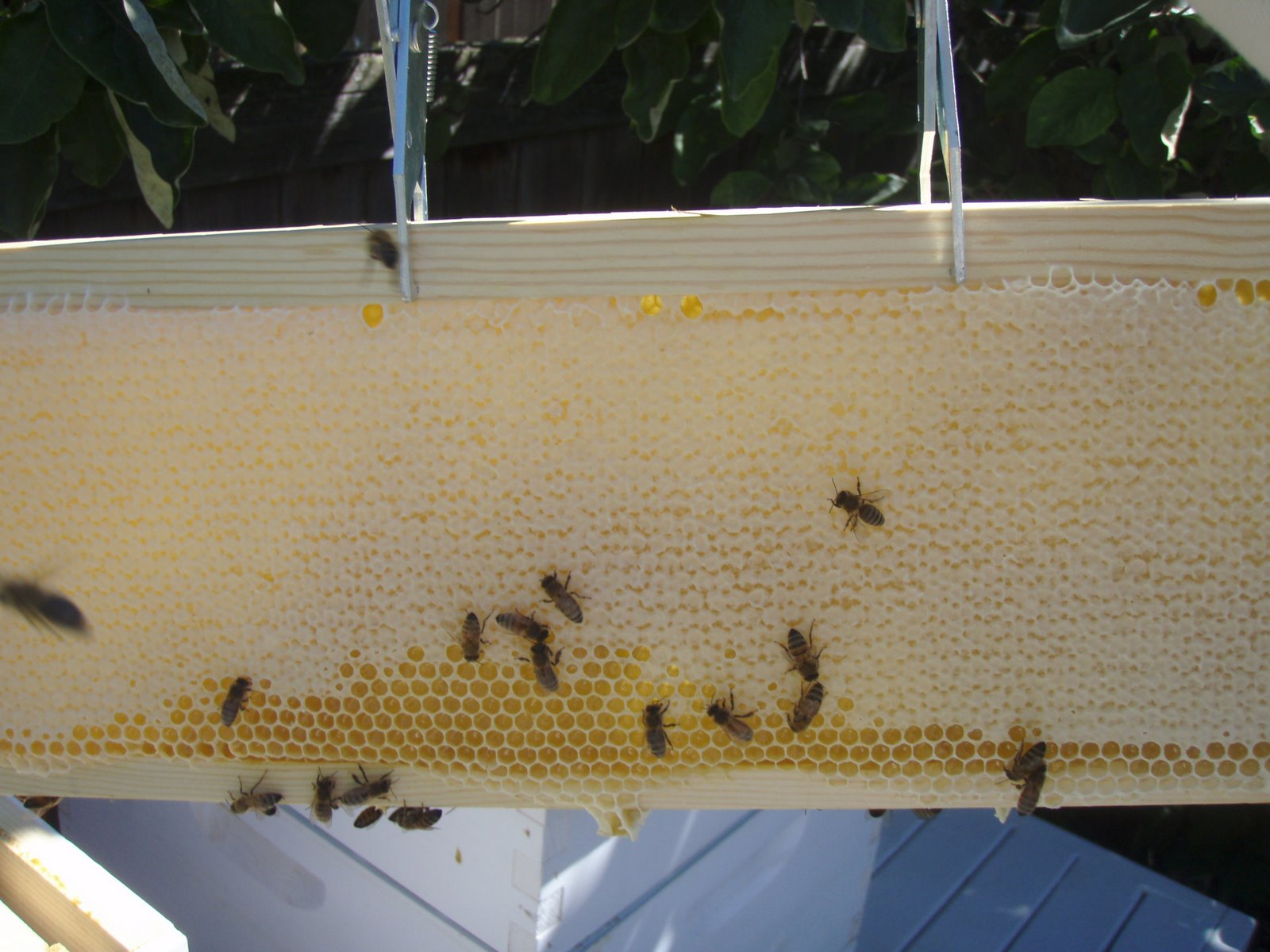
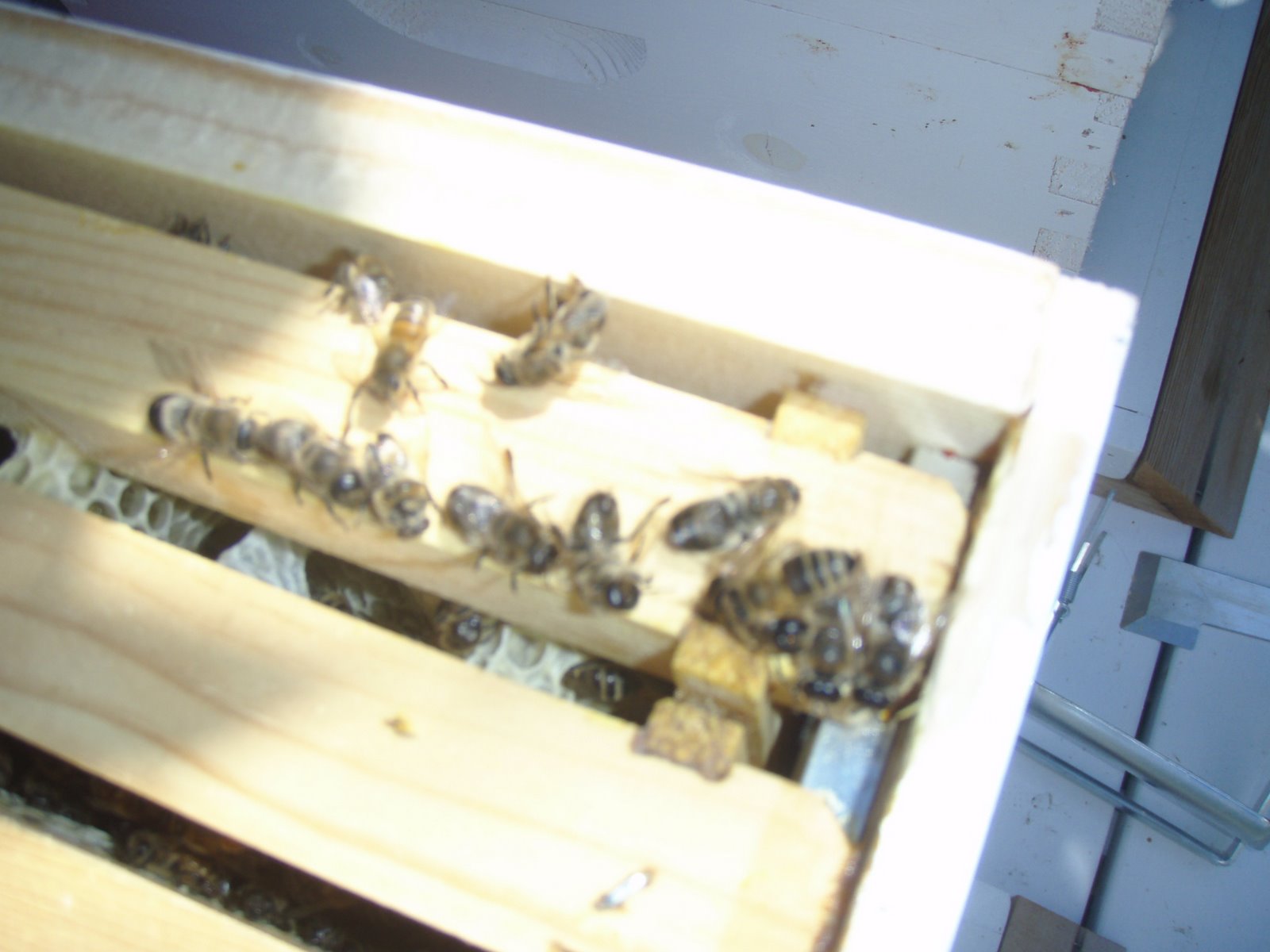
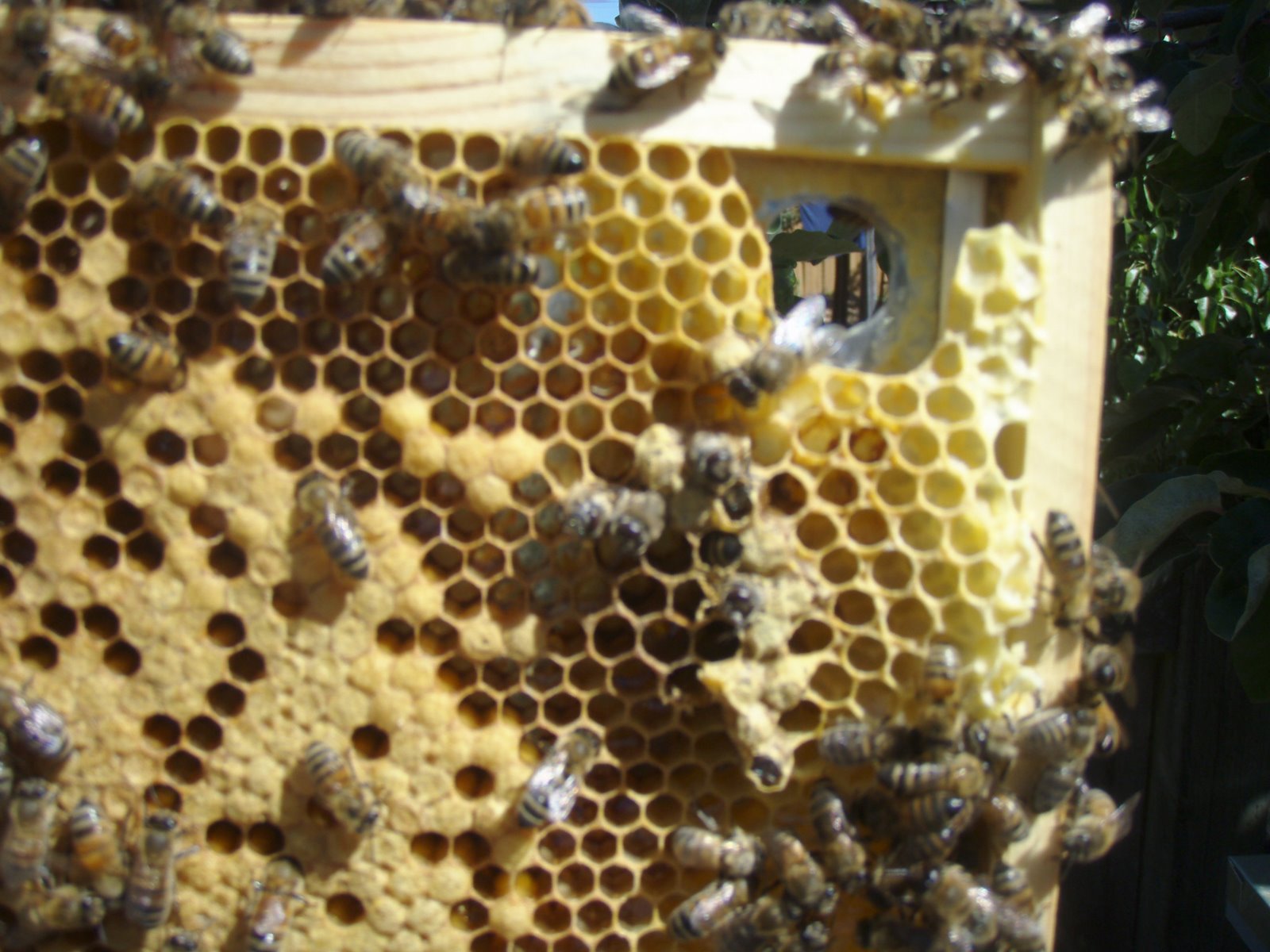 This is another fuzzy shot (I seem to have a hard time with semi-closeups in bright light). It shows a frame out of the upper deep super of West Hive. Drones are hatching from obvious clusters of drone cells. They are much bigger and dome shaped.
This is another fuzzy shot (I seem to have a hard time with semi-closeups in bright light). It shows a frame out of the upper deep super of West Hive. Drones are hatching from obvious clusters of drone cells. They are much bigger and dome shaped. 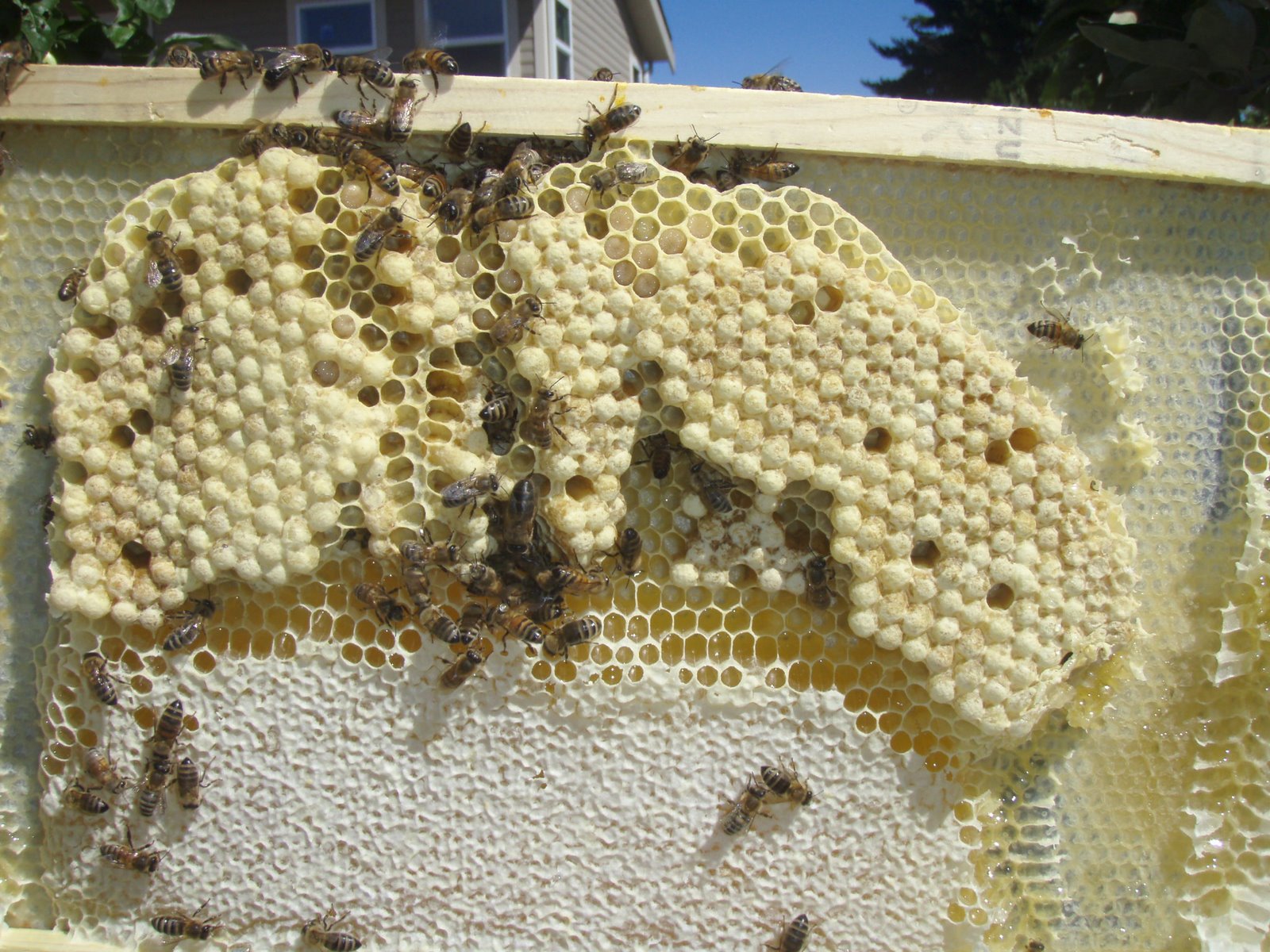
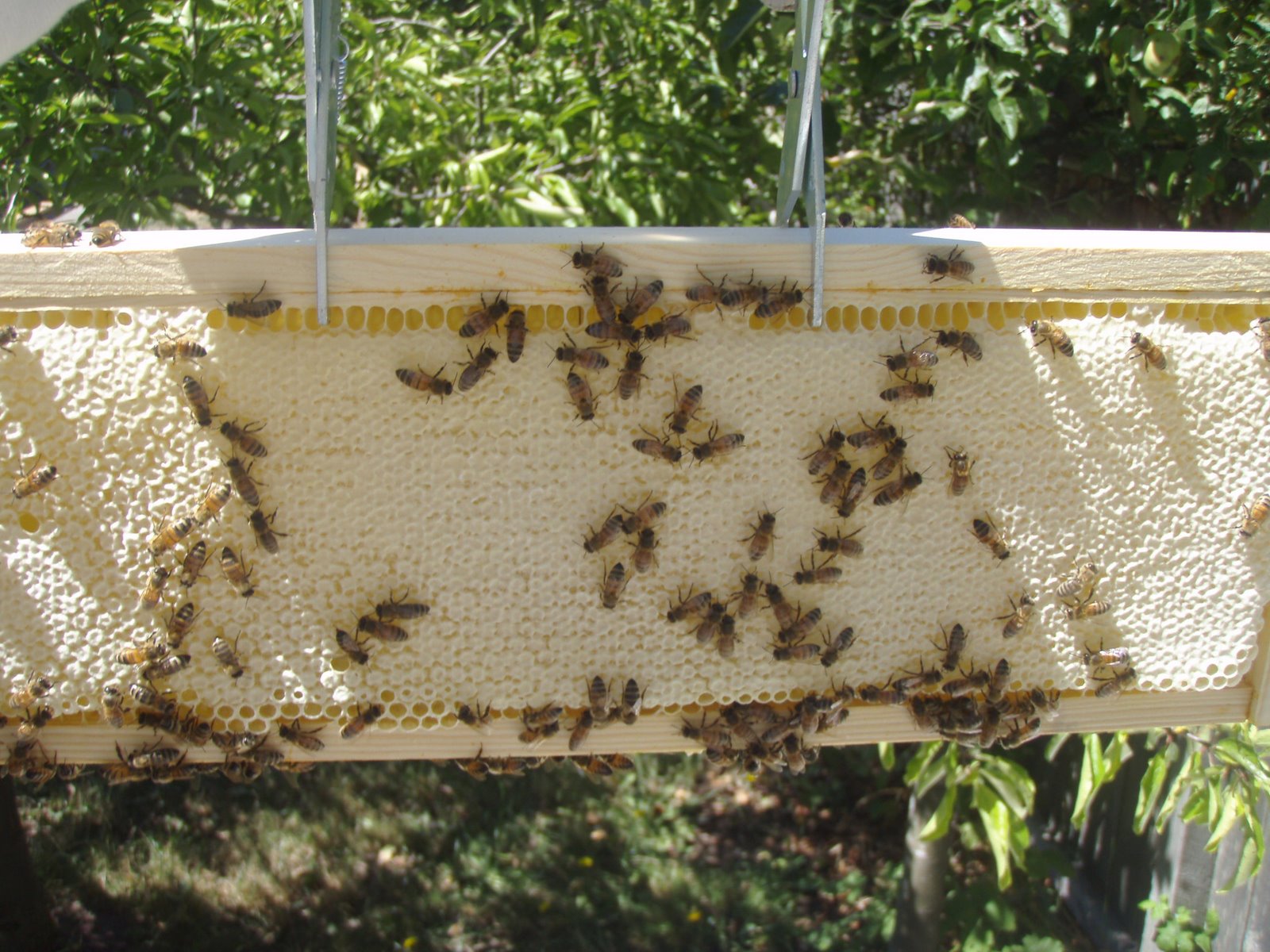
Both hives had about five to six frames each in their respective honey super that were fully loaded with capped honey. That’s about 30 lbs of honey that’s essentially ready for harvest. I think I will put on the second set of honey supers next weekend, in the hope there is enough of a nectar flow over the next month to get some more frames loaded up.
I didn’t spot either queen, but fresh eggs in tight patterns, so at least the queens were around as of a couple of days ago. The overall brood pattern looks good, and there are ample stores of honey an pollen in the deep bodies. The “comb management” work I did last week seemed to have paid off. There were a lot fewer stuck together frames, and a lot less comb I had to remove or destroy this week. No signs of swarm or supersedure cells.
Since it has been so hot during the day, I have been noticing that the bees of both hives like to hang out around the entrance and on the outside of the hives during the evening. I read that they do that to cool off. It’s called “bearding”. It’s not particularly worrisome, but it can be an indicator that ventilation in the hives could be less than ideal. I’m already using screened bottom boards, which promote ventilation. But I decided that it would be a good idea to add some additional vent holes. So during the inspection, I drilled some holes into the narrow sides of each hive body and the honey supers, just under the hand-holds.
